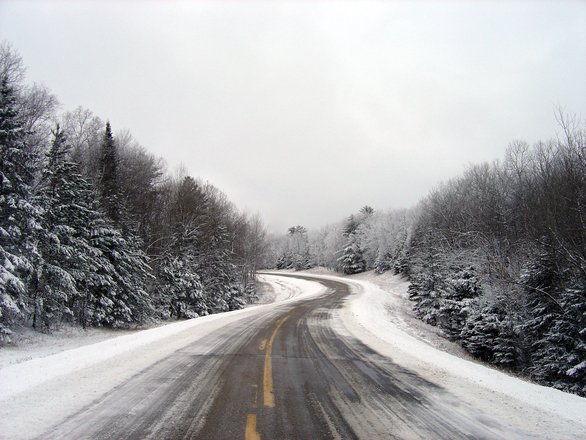Most people will be traveling this winter to visit friends and family, or to go on a vacation to get away from it all. Before you leave, be prepared and be armed with some new driving knowledge – as well as some reminders – from AAA. Brush up on your winter driving knowledge with these facts and tips, always exercise caution, and remember – if the roads are that bad, adjust your plans and go later, or stay at home and stay safe. As AAA says, even if you can drive well in the snow, not everyone else can!
Drive Slowly
Yes, you hear it all the time, but the most important tip for driving in the snow and on ice is to accelerate and decelerate slowly. Whereas the normal following distance on dry pavement is three to four seconds, when driving on icy or snowy roads, following distance should be increased to eight to ten seconds. AAA recommends applying the gas slowly to accelerate for better traction. Give yourself the extra time to stop at a stoplight or stop sign so that you are sure you will stop in time, and do all of your maneuvering slowly – especially turns.
Don’t Stop if You Can Avoid It
Says AAA, “There’s a big difference in the amount of inertia it takes to start moving from a full stop versus how much it takes to get moving while still rolling.” For that reason, if you can slow down enough to keep rolling until a traffic light changes, AAA recommends you do it. It helps here to know the brakes of the vehicle you are driving, so if you are driving a friend or family member's car, take it out for a spin before the trip so you know if the brakes are soft or hard, and find out if their vehicle is equipped with ABS.
Don’t Power Up Hills
When approaching a snow-covered hill, applying more gas will cause your wheels to spin and fail to grip the road. Instead, try to gain inertia before you reach the hill so that it can power you to the top, then reduce your speed at the top of the hill and try to go down it as slowly as possible while retaining control of the vehicle. Never try to stop while going up a hill – always make it over the hill, as it will be harder to gain inertia on an incline.
Check the Weather
Always check the weather ahead of time, and be sure to check it at different times during the day/days you will be traveling, and at different points along your route, as the weather can often be drastically different from one area to another.
Prepare Your Vehicle
Be sure to have the essentials in your car in case you have a breakdown. Put blankets, hats, gloves, food, water, and any needed medication in your vehicle. Also, program your local AAA’s phone number into your contacts list on your phone so you don’t have to waste any precious time searching for it when you need it. Before you leave, make sure your tires are properly inflated for a safe ride, and keep your gas tank above half-full to avoid gas line freeze-up.
[Source: AAA Exchange]










